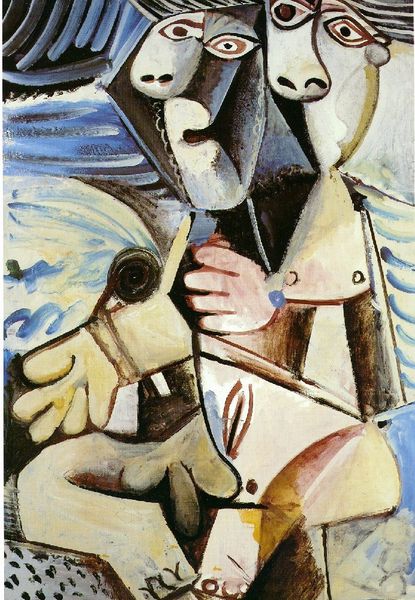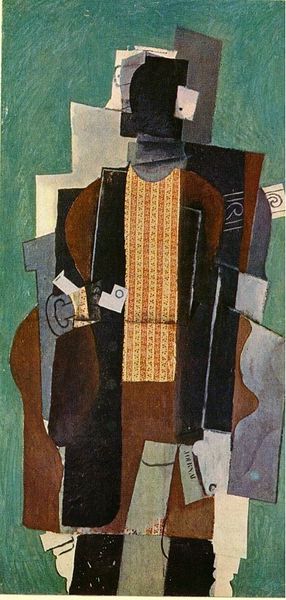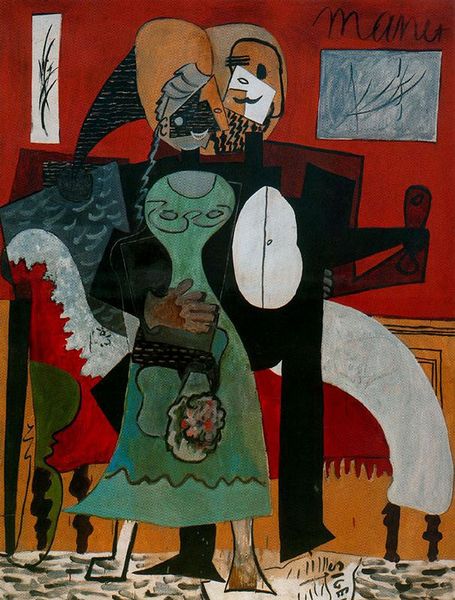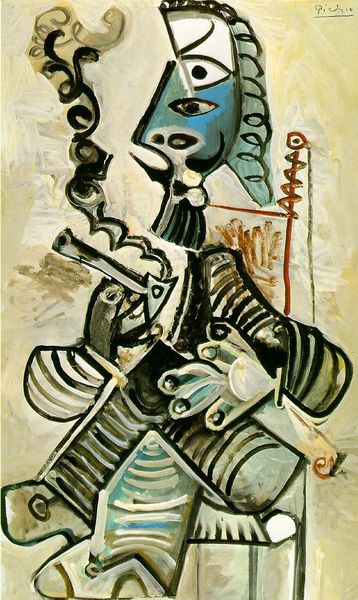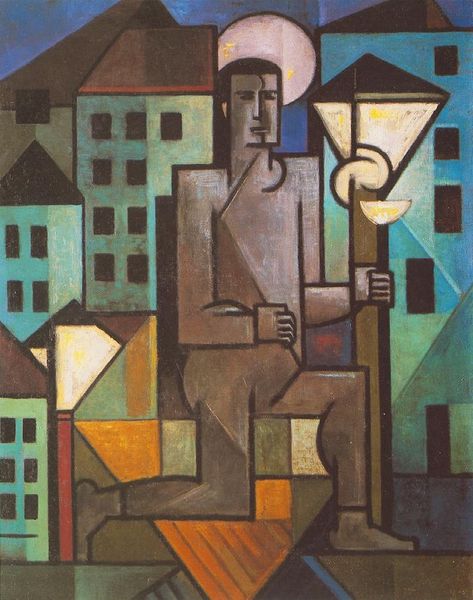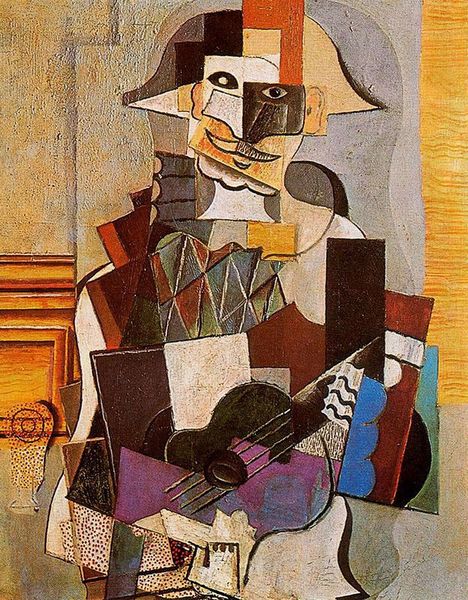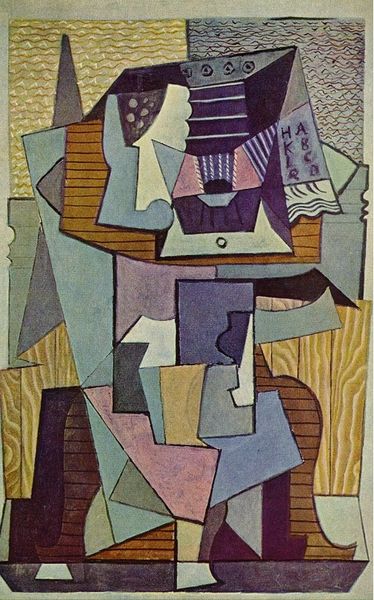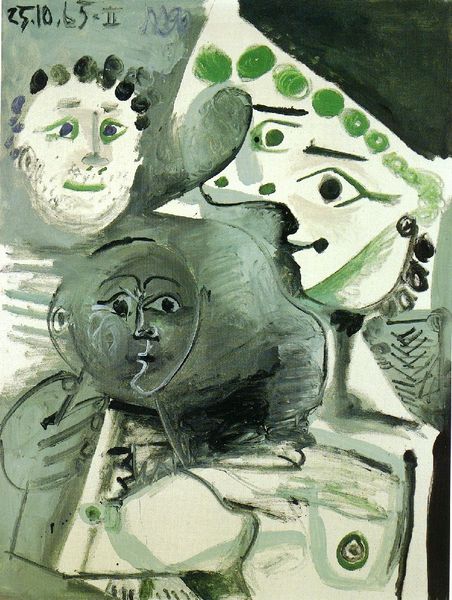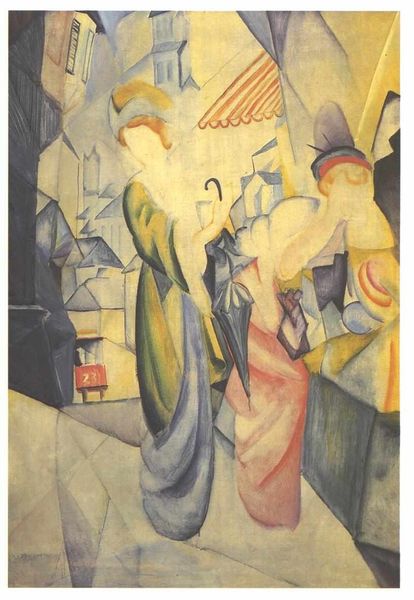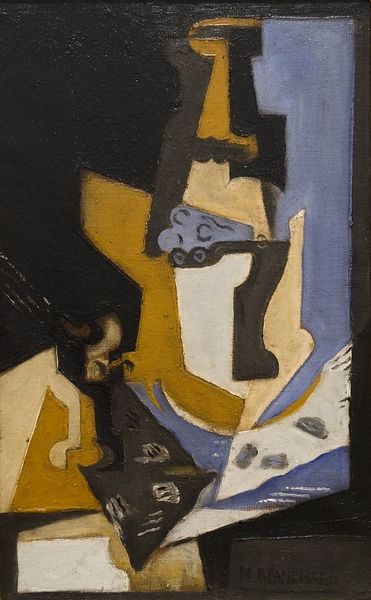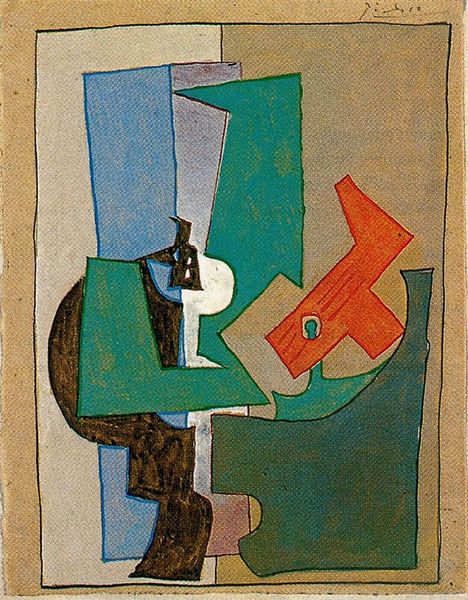
painting, oil-paint
#
portrait
#
cubism
#
painting
#
oil-paint
#
figuration
#
geometric
#
painting art
#
portrait art
Copyright: Public domain
Editor: This is "Two Pierrots" painted by Juan Gris in 1922, made with oil paints. What strikes me most is the use of geometric shapes to create these figures; they almost look like elegant robots. What's your take? Curator: Indeed. Observe how Gris meticulously decomposes the forms, adhering to the principles of Cubism. The use of intersecting planes and fragmented shapes challenges traditional representation. Note also the restricted palette; the artist reduces color to variations of greys and blues, with earth tones creating depth. The success of this work relies almost exclusively on its mastery of shapes and compositional balance. How do the lines interact to lead the eye? Editor: I see how the diagonal lines create a sense of dynamism, while the circular shapes, like the buttons, provide a counterpoint of softer form, keeping it from being too harsh. What is the significance of the subjects in the painting? Curator: Setting aside the Pierrot archetype which was, without a doubt, an intentional selection, the subject recedes in importance when viewed through a formalist lens. The figures provide a framework within which Gris investigates the fundamental elements of painting – line, form, and color. Do you agree that an emphasis on structure supplants any overt narrative intention? Editor: Yes, I do. Focusing on form over content definitely enhances my appreciation of his unique construction of visual information and geometric mastery. I can almost forget they're clowns! Curator: Precisely! The piece succeeds because its formal qualities supersede conventional interpretation, it really shows the focus was in form instead of realism.
Comments
No comments
Be the first to comment and join the conversation on the ultimate creative platform.

